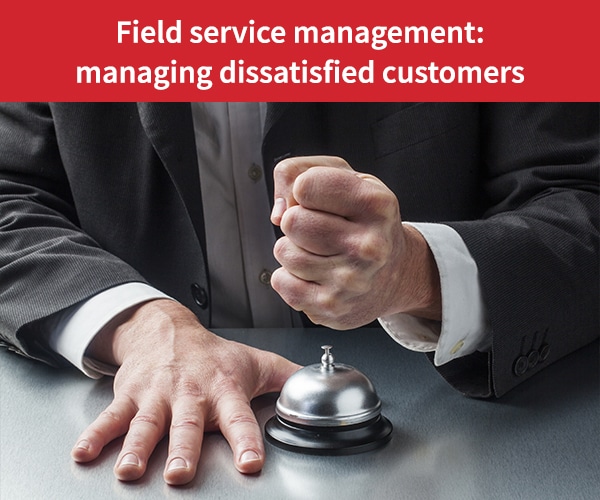
- fiber technology
- Field Service Management
- télécoms
Delivering a seamless customer experience: top 15 considerations for the telecom industry
The below is a recap of the panel “In Home Experience” with Kim McKinley – UTOPIA Fiber, Valerie Buckingham – Plume Design, Inc., Matt Collins – Calix, Jeff Manning – Shentel, and Gunter Reiss – DZS held at the 2023 Fiber Connect.
In today’s rapidly evolving digital landscape, customer experience has become a central focus for the telecommunications industry. The panel discussion at Fiber Connect highlighted the challenges faced by telecoms companies in delivering seamless in-home customer experiences and shed light on the critical strategies required to address these challenges effectively.
From that panel discussion, we’ve gathered 15 considerations to optimize the telecom customer experience.
1. The Growing Complexity of Customer Experiences
One of the foremost challenges discussed by the panelists is the increasing complexity brought about by the proliferation of devices in our homes. With the ever-expanding array of smart devices, from smartphones and tablets to smart TVs, thermostats, and appliances, service providers are grappling with the need to ensure these devices work harmoniously together to provide a good customer experience.
2. Enhancing Security Measures
Security has also emerged as a paramount concern. As more and more personal data and sensitive information flow through these devices, service providers are tasked with implementing robust security measures to protect their customers. This includes safeguarding against cyber threats and ensuring that users feel secure in their digital environments.
3. Understanding Consumer Behavior and Usage Patterns
A crucial point emphasized during the discussion was the need to understand consumer behavior and usage patterns comprehensively. By gaining insights into how customers interact with their devices and services, providers can tailor their offerings to optimize the overall experience. This approach enables personalized solutions that meet the unique needs of individual consumers.
4. Speed and Latency in the Era of Emerging Technologies
As emerging technologies like Virtual Reality (VR), Augmented Reality (AR), and online gaming continue to gain traction, the need for speed and low latency becomes increasingly vital. These technologies demand instantaneous responses and high bandwidth capabilities, necessitating a robust infrastructure capable of supporting them.
5. Driving Factors of In-Home Experiences
The panelists also touched upon the various driving factors behind in-home experiences. These include digital well-being, healthcare applications, social connectivity, and home automation. As these aspects become more integrated into our daily lives, service providers must adapt to meet these evolving needs.
6. Simplifying Complex Concepts for Consumers
While the panel acknowledged the challenge of educating consumers about technical terms like latency, they also highlighted the importance of simplifying these complex concepts. Clear and straightforward communication is essential to ensure that consumers understand the value of the services provided.
7. Focus on Consumer Experience Over Technical Differentiators
In the competitive landscape of service providers, it’s crucial to shift the focus from technical differentiators to the overall consumer experience. Speed, latency, and overall satisfaction in the home environment are what truly matter to consumers.
8. Platform Approach for Exceptional Experiences
A platform approach, designed to provide simple solutions and exceptional experiences for subscribers, was also discussed as a strategic imperative. This approach allows service providers to offer a holistic solution that caters to the diverse needs of their customer base.
9. Educating Consumers About Service Benefits
The panelists stressed the importance of educating consumers about how services will enhance their specific needs and experiences. Targeting different personas and tailoring services to meet their unique requirements can create a deeper connection with customers.
10. The Role of ISPs in a Connected World
Internet service providers (ISPs) are central to supporting the growing number of connected devices in customers’ homes. Building trust through transparency and clear communication about data usage and privacy is vital to ensure customers feel secure in their digital environments.
11. AI Technology and the Telecom Customer Experience
AI technology plays a crucial role in preventing customer churn and fostering trusted partnerships with subscribers. By analyzing user behavior and preferences, service providers can offer personalized recommendations and solutions that improve CX.
12. Collaboration and Standards
Collaboration and adherence to industry standards among suppliers are seen as essential in providing a unified experience for consumers. These partnerships enable the seamless integration of devices and services, making it easier for customers to enjoy the benefits of a connected home.
13. The Evolving Role of Field Technicians
The role of field technicians in improving customer experience was also discussed. Automation, data-driven diagnostics, and AI-trained models have the potential to streamline customer service and support and provide faster solutions, ultimately leading to higher customer satisfaction.
14. Investing in Value and Credibility
The discussion concluded by highlighting the importance of investing in areas that create value and credibility. Service providers must continuously adapt to meet the changing needs of their customers and remain at the forefront of technological advancements.
15. Customer Centricity as Priority
In a final statement, the panel urged marketers not to rely solely on analytics but also to prioritize complete customer centricity. Engaging with consumers and understanding their desires and preferences is paramount to building lasting relationships and ensuring success in the rapidly evolving marketing industry.
In a world where digital connectivity is increasingly central to our lives, service providers have a crucial role to play in ensuring that the in-home experience remains seamless, secure, and tailored to individual needs. By addressing the challenges discussed in the panel and adopting customer-centric strategies, providers can create a future where the digital home is a place of convenience, security, and endless possibilities.
Fostering Trust & Loyalty
Effective customer experience management in telecoms is essential for enhancing satisfaction and loyalty. To improve customer experience in telecoms, companies must prioritize a customer-centric approach, leveraging innovative solutions and technologies. By consistently refining the customer experience in the telecom industry, companies can build lasting relationships with their customers, fostering trust and loyalty in an ever-evolving landscape.
Recognizing and addressing customer expectations is key to not only retaining clients but also positively impacting the bottom line. Customer retention and loyalty hinge on the ability to address customer issues in real-time, demonstrating a commitment to resolving concerns promptly and efficiently. To truly improve customer satisfaction, telecom companies must stay attuned to evolving expectations and proactively enhance their services. Employing real-time solutions and leveraging innovative technologies can significantly improve CX, creating a positive ripple effect on customer loyalty and ultimately contributing to your company’s overall success.
About
Praxedo has been a trusted provider of field service management (FSM) solutions for the world’s leading telecommunications providers since 2005. Our success is attributed to our unwavering focus on delivering the best FSM tools in the market. Unlike other providers, we don’t aim to supply all enterprise applications. Instead, we prioritize our expertise in FSM and offer a cloud-based solution that streamlines deployment from start to finish.
Today, more than 1,300 companies including large enterprises and SMBs, and 40,000 users across the globe rely on Praxedo daily to optimize their field service operations. Our solution enables them to increase productivity, optimize resources, and facilitate seamless data exchanges between field personnel such as technicians and engineers, and their dispatchers.
For further resources, head to our blog on Fiber deployments: How service companies can prepare for this growing market opportunity
For more information about how our solution can help your organization, request a demo
Our similar articles.
-
- Field Service Management
- Technician
- Customer Satisfaction
- Technicien
- Customer satisfaction
- Work orders
How to “manage” angry customers in field service management
February 20, 2020 -
- Field Service Management
- Optimization
- Optimisation
How do facility managers keep up with day-to-day operations?
September 16, 2021 -
- Field Service Management
- Technician
- Artificial Intelligence
- Geolocation
- Software
How to reduce time on the road for field technicians
August 12, 2020


